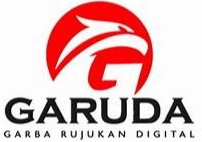Karakteristik Dye-Sensitized Solar Cell (DSSC) Berbasis Zat Pewarna Alami dari Ekstrak Jantung Pisang
DOI: https://doi.org/10.25077/metal.1.2.99-108.2017
Author(s)
Is Primananda (Teknik Mesin, Fakultas Teknik, Universitas Andalas, Padang)Rakhmat Dimas Rezvozano (Teknik Mesin, Fakultas Teknik, Universitas Andalas, Padang)
Abstract
Keywords
Full Text:
PDFReferences
W. Septina. Pembuatan Prototipe Solar Cell Murah dengan Bahan Organik-Inorganik (Dye-sensitized Solar Cell), 2007.
J. B. Harborne. Metode Fitokimia: Penuntun Cara Modern Menganalisis Tumbuhan, Institut Teknologi Bandung, Bandung, 1996.
A. Latif, S. Monzir, B. Mahmoud, et al., “Dye-Sensitized Solar Cells Using Dyes Extracted From Flowers, Leaves, Parks, and Roots of Three Trees”, International Journal of Renewable Energy Research”, Vol. 5, No. 1, 2015.
E. A. Pazmino-Duran, M. M. Giusti, R. E. Wrolstad, et al., Anthocyanins from banana bracts (Musa paradisiaca) as potential food colorant. Food Chemistry, 2001.
U. Yanuarti. “Identifikasi Antosianin Jantung Pisang (Musa paradisca, Linn) Varietas Kepok”, Program Studi Kimia. Fakultas Sains dan Matematika. Universitas Kristen Satya Wacana, Salatiga, 2008.
L. N. Lestario, D. Lukito, dan K. H. Timotius. “Kandungan antosianin dan antosianidin dari jantung pisang klutuk (Musa brachycarpa Back) dan pisang ambon (Musa acuminata Colla)”, Jurnal Teknologi dan Industri Pangan, 2009.
L. N. Lestario, M. K. W. C. Yoga, A. I. Kristijanto. “Stabilitas Antosianin Jantung Pisang Kepok (Musa paradisiaca L) Terhadap Cahaya Sebagai Pewarna Agar-Agar”, Program Studi Kimia, Fakultas Sains dan Matematika, Universitas Kristen Satya Wacana.
D. A. Skoog, F. J. Holler, T. A. Nieman. Principle of Instrumental Analysis, 1998.
N. Wijayanto, Nurunnajah. “Intensitas Cahaya, Suhu, Kelembaban, dan Perakaran Lateral Mahono (Swietenia Macrophilla King.) di RPH Babakan Madang BKPH Bogor, KPH Bogor”, Fakultas Kehutanan IPB, Bogor, 2012.
R. Ardianto, W. A. Nugroho, S. M. Sutan. “Uji Kinerja Dye Sensitizxed Solar Cell (DSSC) Menggunakan Lapisan Capacitive Touchscreen Sebagai Substrat dan Ekstrak Klorofil Nannochloropsos Sp. Sebagai Dye Sensitizer dengan Variasi Ketebalan Pasta TiO2”, Fakultas Teknologi Pertanian, Universitas Brawijaya, Malang, 2015.
 Article Metrics
Article Metrics
This article has been read : 1055 timesPDF file viewed/downloaded : 674 times
Copyright (c) 2018 Is Primananda, Rakhmat Dimas Rezvozano
View METAL's Stats

This work is licensed under a Creative Commons Attribution-NonCommercial-ShareAlike 4.0 International License.







